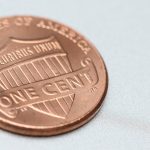Rebalancing Your Portfolio
Most investors set a target asset allocation for their investment accounts. Normally this is the amount invested in stocks and bonds. (Even though other assets could be a part of the mix as well).
For example, a target asset allocation for an aggressive investor might be 80% stocks and 20% bonds. This a growth portfolio. If an all in one fund is not available investors will use individual funds to achieve the target allocation.
Over time though, as assets rise and fall and change in value, the asset allocation will get “out of balance”. Investments need to be rebalanced to get back in track.
In my view rebalancing is important in that it keeps you aware of the mix you are targeting and it also enables you to buy investments when they are down in value relative to other investments. Ya know, buying low and all that.
But you don’t need to obsess about your asset allocation. For example, if you want to target an 80/20 mix, and you are just getting started with your investments, I think you can go 100% stocks for some time. I explain this here. You can easily skip bonds for a while.
Also, if you start with a mix of 80/20, and your stocks are 82% and your bonds are 18%, this is not a concern. It can easily be out of balance for a bit and this will not do any damage to your long term plan.
As you fund your account it is simple to rebalance. Consider a standard 3 ETF portfolio for an expat with all iShares ETF’s. For a growth portfolio you could target 70% with a developed market ETF, 10% emerging markets, and 20% bonds. Easy enough. You start with $10,000 USD and invest in each as a percentage of their target, $7000, $1000, and $2,000.
If you send in $2,000 for your next deposit, you don’t need to buy all three ETF’s! Don’t sweat it – just buy your large one. Now you have $9000 in the developed markets, $1,000 in the emerging markets, and $2,000 in bonds. Your mix is now 75/8/83.
Next deposit you send in another $2,000 and you buy the same fund again! Your mix is now 78/7/14. And then the next month you do the same thing. Your mix is now 81/6/13. Whoa – you are way out of balance!
But don’t get too excited about this. Next deposit you can buy the bond ETF. Your mix is now 72/5/22. And now since you are way behind on emerging markets, next deposit buy the emerging market and you are 65/15/20.
The following deposit you revert back to the developed market and you are 68/12/20. You’re almost back to target and you only had to buy one ETF each time. For those starting their investments you can go back and forth like this for quite a while and you are fine.
However, as your balance grows, you will want to be more aware of how investment performance impacts your asset allocation. This will help you determine which investments and how much to buy and how much when you make a deposit.
Using our example above, assume the investor has $150,000 USD in their account and it is relatively close to the target of 70/10/20 with values at 109,000/13,000/28,000. Their mix is 72.6/8.7/ 18.7. They then add in $7,500 which is in cash waiting to invest.
Their total now is $157,500. To get to 70% in developed markets, they need to have $110,000 in that fund. But they are almost there anyway! No need to buy this one. For emerging markets, they need $15,750. Since they have $13,000 they would buy $2,750.
Finally, they can invest $4,750 in the bond fund to bring them to$32,750. This is now 21.7% of the total. There new mix is 69.2/10/21.8. Almost spot on and they only bought two ETF’s.
Rebalancing your portfolio is important yet simple. There is no need to hyperventilate if it is a bit out of whack. You can likely easily realign the mix with your next deposit or two.



